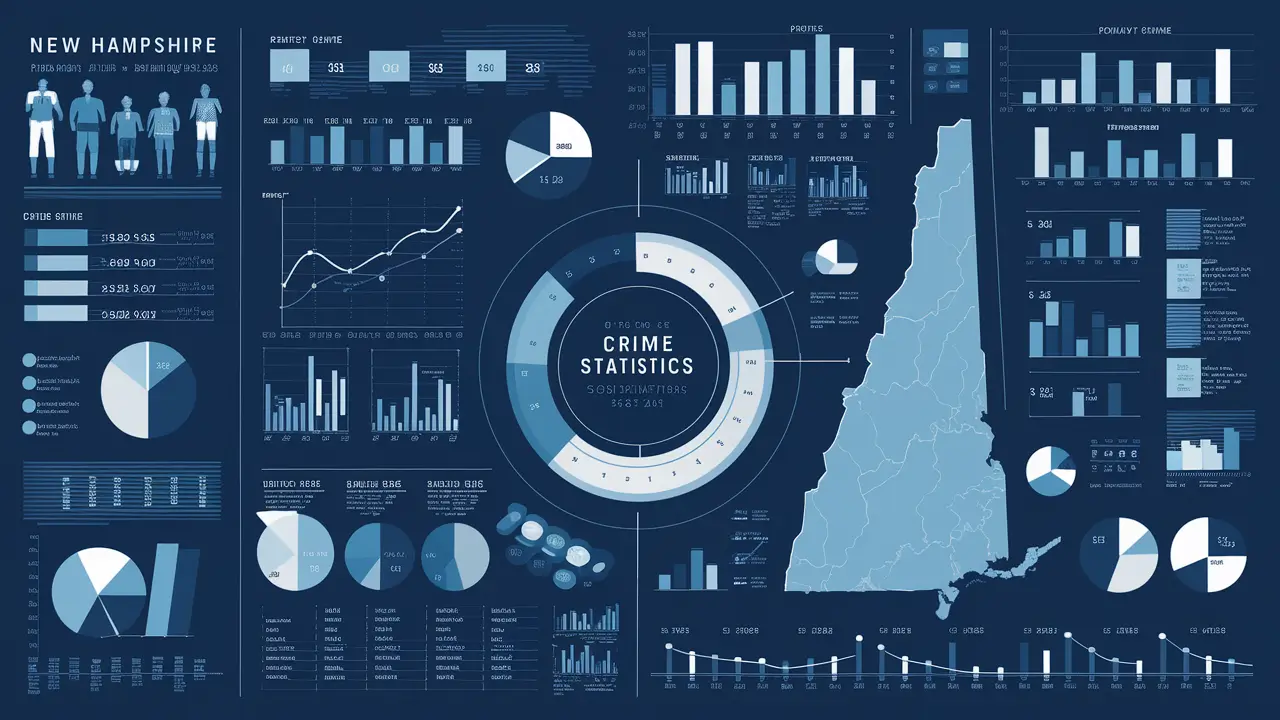Though crime exists in New Hampshire in forms that impact communities and individuals, as was already said, the state is thought to have low crime rates compared to other states, let alone larger cities in the United States of America. Future policies and methods for crime fighting among legislators, law enforcers, and citizens in the state depend on knowledge about the current crime trends to be able to be developed.
Overall Crime Rates
However, the overall violent crime in New Hampshire is small, so specific trends of serious crime should be watched. The SBI reported that in 2020, there were 3 homicides, 197 robberies, and 1382 aggravated assaults across the state. A comparison with the year before revealed that there was a 24% increase in robberies and 11% in aggravated assaults.
Family violence is particularly significant and is the cause of nearly one in eight violent acts. In the last 5 years, the number of DV crimes has risen by 20% across the state. These increasing levels of violent crimes depict that further efforts must be made to help victims and prevent cases of domestic abuse.
Property Crime Statistics
The most common property crimes in 2020 included:
- 5,873 burglaries
- 13,672 larcenies/thefts
- For the year ended on 5/31/2010, there were 2,037 motor vehicle thefts.
The overall crime rate also reduced marginally by 3% for the category of burglaries throughout the previous year. However, larcenies rose by about 11% more than in 2019, as per the reports. Similarly, there was a slight rise in the records of motor vehicle theft by 8.1%.
The rate of both burglaries and motor vehicle thefts was also reduced in the past decade, by more than 40% on average. However, the cases of larceny and theft are still common across the communities since the frequency has not changed significantly in the last 10 years.
This crime in New Hampshire and understand the various cities that experience high rates of crime.
To some extent, crime affects the state differently in different towns. Manchester and Nashua are consistently among the cities that witness a higher crime rate each year, and they also experience the most dramatic creativity declines.
Manchester had the highest violent crime percentage; the rate was 484 per 100,000 residents in 2020. It also recorded the highest number of recorded property crimes at 3,488 cases per 100,000 individuals. The three types of crime that were most affected in Manchester were aggravated assault, theft, and motor vehicle theft.
There was overall a decrease in crime but Nashua remained to have high rates when compared to other cities in NH. Other crucial matters that need solutions in Nashua are violent crimes such as robbery aggravated assault and drug use offenses.
Going Forward
The New Hampshire state again reiterates its status with lesser crime rates than the national average. Targeted and continued prevention and enforcement practices have also resulted in average declining crime trends for the last two to three decades.
However, one has to pay attention to some worrying trends that have manifested in crime rates in recent years, particularly with a focus on violent crimes. When New Hampshire policymakers and its citizens have reflected on these last data, eradicating domestic abuse and violence should still be among the priority strategies for creating a safe community in the state. So, it is possible to reduce their numbers in the future by further expanding the number of such reports and helping the victims, as well as focusing on perpetrators’ rehabilitation.


